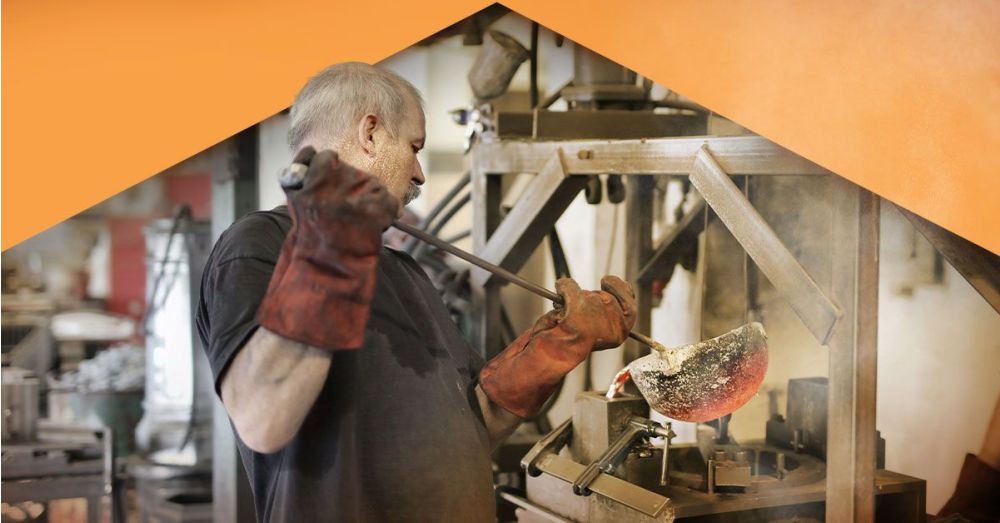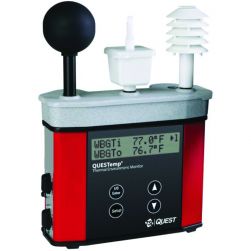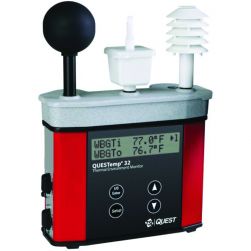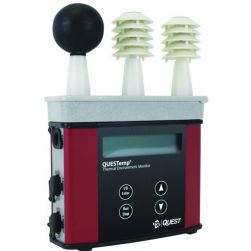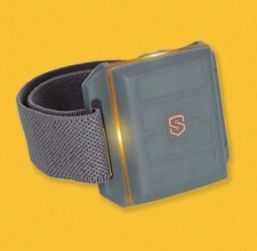Monitoring and Preventing Heat Stress in the Workplace
A 2023 Guide to Monitoring and Preventing Heat Stress in the Workplace
Working in the heat is dangerous—every year, according to the Occupational Safety & Health Administration (OSHA), thousands of workers become ill working in hot or humid environments and there are dozens of heat-related fatalities in the workplace.
Businesses have a responsibility to protect their workers from heat stress as well as heat-related illnesses and injuries. Fortunately, there are tools to help employers monitor heat and prevent heat stress.
Heat stress monitors measure and record air temperature, humidity, air flow, and radiant heat in the workplace environment, and employers can use the data to help prevent and respond to heat-related illnesses and injury in the workplace.
What Is Heat Stress?
The National Institute for Occupational Safety and Health (NIOSH) warns that workers who are exposed to extreme heat, high levels of humidity, or excessively hot workplace environments are at greater risk of heat-related illnesses and injuries.
Workers most at risk of heat stress include those who work in hot indoor environments—like construction workers, factory workers, miners, and firefighters—as well as anyone who works outdoors.
Heat-Related Illnesses and Injuries
Occupational heat stress can cause many different heat-related illnesses and injuries.
Heat stroke occurs when the body’s temperature increases dramatically and rapidly, resulting in an inability of the body to control its own temperature. It is the most dangerous heat-related illness; without emergency medical treatment, heat stroke can result in permanent disability or death.
Heat exhaustion and heat cramps can result from an excessive loss of water and/or salt due to sweating during strenuous activities. Rashes and burns are also possible.
Additionally, extreme levels of heat can raise the overall possibility of injury due to sweaty palms, dizziness, dehydration, fatigue, fogged-up safety glasses, and cardiac strain.
How to Prevent Heat Stress in the Workplace
Employers need to implement strategies and tools that help prevent heat stress. The following prevention methods are critical steps in keeping employees safe and managing heat stress in the workplace.
Hydration
Hydration is an important part of preventing heat stress. Workers need easy access to cool, potable water near the work area, and employers should provide adequate water breaks as well as encourage workers to stay hydrated.
Rest Breaks
When workers feel discomfort from heat, they need to cool down with a rest and/or water break. Employers should shorten the length of work shifts and provide rest periods when temperatures increase.
Heat Stress Monitors
Heat stress monitoring equipment measures and records heat in the workplace environment, whether indoors or outdoors. These devices are designed to calculate how long workers can be exposed to the environmental temperature. By monitoring workplace heat exposure, heat stress monitors provide data that employers can use to make decisions that help prevent heat-related illnesses and injuries.
OSHA recommends the use of heat stress monitors to estimate workplace environmental heat, and the American Industrial Hygiene Association (AIHA) has determined that wearable heat stress devices, used appropriately and combined with other heat stress prevention methods, have significant potential to improve safety in the workplace.
Training
All employers, supervisors, and workers should undergo heat-related safety education and training. This training needs to include information on the signs and symptoms of heat-related illnesses, how to prevent heat stress, and the importance of heat acclimatization.
Additionally, employers should establish emergency procedures for responding to possible heat-related illnesses and ensure all employees know what to do if someone shows signs of heat stress.
Control Measures
There are a variety of control measures employers can implement to reduce workplace heat stress.
For example, the workplace environment itself can be adjusted to reduce workers’ exposure to heat, such as a reduction in steam leaks, an increase in air flow, or the use of heat-absorbing barriers. Additionally, on the administrative side, employers can limit the amount of time workers need to be in the heat, increase rest periods, and institute a heat alert program.
Acclimatization
Heat acclimatization refers to the physiological adaptations a body undergoes after gradual and progressive exposure to heat. After being repeatedly introduced to a hot environment, workers start to acclimatize to the extreme conditions, leading to benefits like increased sweat efficiency, stabilized circulation, and increased skin blood flow.
To acclimatize workers, employers should increase their exposure to heat over one to two weeks, with longer and longer sessions after enough time has passed. NIOSH has a recommended heat acclimatization schedule for new and experienced workers who need to adjust to extreme heat in the workplace.
Heat Stress Risk Levels & Protective Measures
This chart, from OSHA’s website, provides a basic guideline for risk levels and protective measures. Click the links for OSHA recommendations for worker health and safety in high temperature environments.
| Heat Index | Risk Level | Protective Measures |
|---|---|---|
| <91°F | Lower | Basic heat safety and planning |
| 91° to 103°F | Moderate | Implement precautions, heighten awareness |
| 103° to 115°F | High | Additional precautions to protect workers |
| >115°F | Extreme | Triggers aggressive protective measures |
The US National Oceanic and Atmospheric Administration’s (NOAA) National Weather Service produced this heat index chart, so you can take into account both temperature and humidity in determining what heat-stress precautions are necessary in your daily operations.
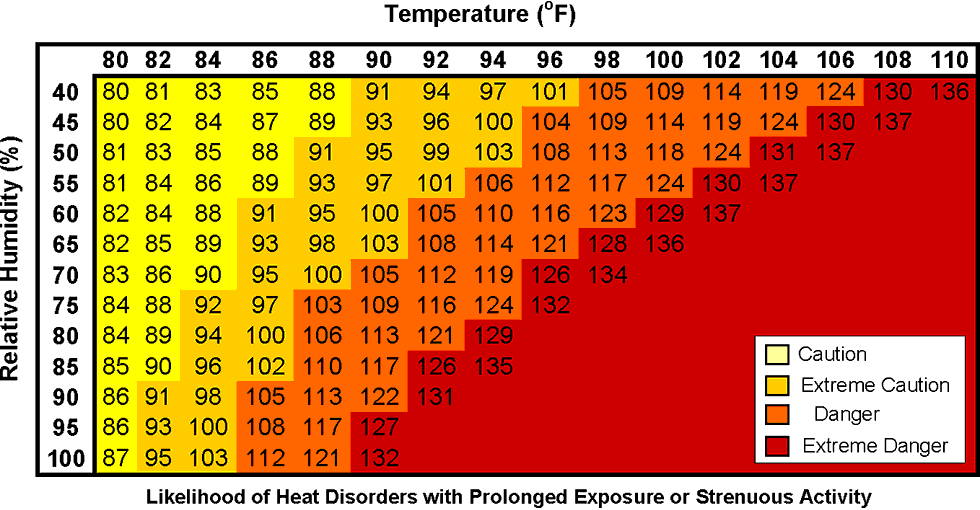
Heat Stress Prevention and Monitors
When it comes to preventing heat stress, temperature is just one factor. Four different measurements contribute to environmental heat:
- Air temperature
- Humidity
- Radiant heat (from sources ovens, boilers, furnaces, and the sun)
- Air flow
Any calculation used to assess the heat of a workplace environment should include all four factors.
While standard thermometers only measure air temperature, heat stress monitors take temperature, humidity, wind, and radiant heat into account—making them the best way to measure workplace environmental heat on-site.
Most heat stress monitors use wet bulb globe temperature (WBGT) sensing technology. These devices contain three thermometers: a dry bulb thermometer to measure air temperature, a wet bulb thermometer to measure evaporative cooling, and a black globe thermometer to measure radiant heat. Then, the equipment calculates a WBGT heat index value that employers can use to monitor environmental heat.
Heat stress monitors can be placed in the work area or worn as a personal device. A personal heat stress monitoring device is a unit that is wearable on a person's upper arm and evaluates exertion based on an algorithm. The unit will then alert the wearer that they should take a break and also alert to inform them of when they are ready to return to work.
Get High-Quality Heat Stress Monitoring Equipment at RAECO Rents
At RAECO Rents, we have the latest heat stress monitoring equipment for industry professionals. Our goal is to provide you with the devices you need to quickly and accurately monitor heat in both indoor and outdoor workplace environments. With the data provided by our heat stress monitors, you can take action to protect your employees and help prevent heat injury.
When you rent equipment from RAECO Rents, you can expect to get clean, operable, high-quality instruments. With our Instant-On guarantee and after-hour support, we are determined to make your rental experience easy.
Contact our rental service team today to get help finding high-quality heat stress monitoring equipment.

